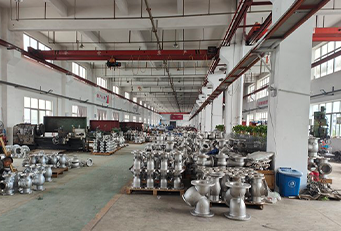1.5 inch ball valve
Understanding the 1.5-Inch Ball Valve A Key Component in Fluid Control Systems
In various industrial applications, fluid control is a critical aspect of operations. One of the essential components that facilitate efficient fluid management is the ball valve, specifically the 1.5-inch ball valve. This article delves into what a 1.5-inch ball valve is, its functionalities, advantages, and the contexts in which it is most commonly utilized.
What is a 1.5-Inch Ball Valve?
A ball valve is a type of quarter-turn valve that uses a spherical disc to control the flow of fluid through it. The term 1.5-inch refers to the valve's diameter, indicating that the valve's inlet and outlet ports have a bore of 1.5 inches. The ball within the valve has a hole or port through the center; when the valve is opened, this port is aligned with the pipeline, allowing fluid to pass through. Conversely, when the valve is closed, the solid side of the ball obstructs the flow.
Functionality of a 1.5-Inch Ball Valve
1. Quick Operation One of the main advantages of the ball valve design is its quarter-turn operation. A full 90-degree turn is sufficient to either open or close the valve. This characteristic allows for swift operation and makes it ideal for situations requiring immediate response to fluid flow changes.
2. Tight Sealing Ball valves are designed to provide a very tight seal. When closed, the ball makes contact with the valve seats, creating a nearly leak-proof seal. This makes the 1.5-inch ball valve suitable for carrying fluids under pressure.
3. Versatility Ball valves can be used with a wide range of fluids, including water, gas, oil, and other chemicals. This versatility makes them vital across multiple industries such as oil and gas, water treatment, food and beverage, and pharmaceuticals.
4. Low Pressure Drop The internal design of the ball valve allows for a straight-through flow path when fully open. As a result, there’s minimal pressure drop across the valve, maintaining system efficiency.
1.5 inch ball valve

Advantages of Using 1
.5-Inch Ball Valves1. Durability Constructed from robust materials such as stainless steel, brass, or PVC, 1.5-inch ball valves are built to withstand challenging operational conditions, including high pressures and corrosive environments.
2. Maintenance-Free Operation Ball valves require very little maintenance once installed. Unlike other valve types that may need regular adjustments or repairs, ball valves tend to have longer lifespans and consistent performance if properly chosen for the application.
3. Cost-Effective While the initial cost of a ball valve may be higher than some other valve types, the long-term savings due to minimal maintenance and durability make it a cost-effective solution.
4. Easy Installation The design of the 1.5-inch ball valve allows for quick and straightforward installation, often requiring only standard tools and knowledge.
Common Applications
The 1.5-inch ball valve is widely used in various sectors. In the water treatment industry, it plays a crucial role in controlling the flow of water through treatment plants. In chemical processing, these valves manage the transport of diverse substances, ensuring that operations run smoothly and safely. The food and beverage industry benefits from the sanitary options available, which prevent contamination while ensuring reliable operation.
Conclusion
The 1.5-inch ball valve is an integral component in many fluid control systems, offering quick operation, reliable sealing, and versatility across multiple industries. Its durability and low maintenance needs make it a valuable asset to any fluid management setup. By understanding the functionalities and applications of this essential valve type, industries can optimize their operations and enhance overall efficiency in fluid management.
-
Breakthrough in Domestic Low Temperature Valve Technology in ChinaNewsAug.18,2025
-
From Machinery to Intelligent Brain: The Digital Transformation Wave of the Valve IndustryNewsAug.18,2025
-
PCVEXPO 2025NewsAug.18,2025
-
The Key to Fluid Control: Exploring the Advantages of Ball Valves in Industrial SystemsNewsJul.09,2025
-
The Versatile World of 1, 2, and 3 Piece Ball ValvesNewsJul.09,2025
-
Stainless Steel Ball Valves: The Ideal Choice for Efficient Flow ControlNewsJul.09,2025
-
Optimizing Fluid Control with Ball Float ValvesNewsJul.09,2025




